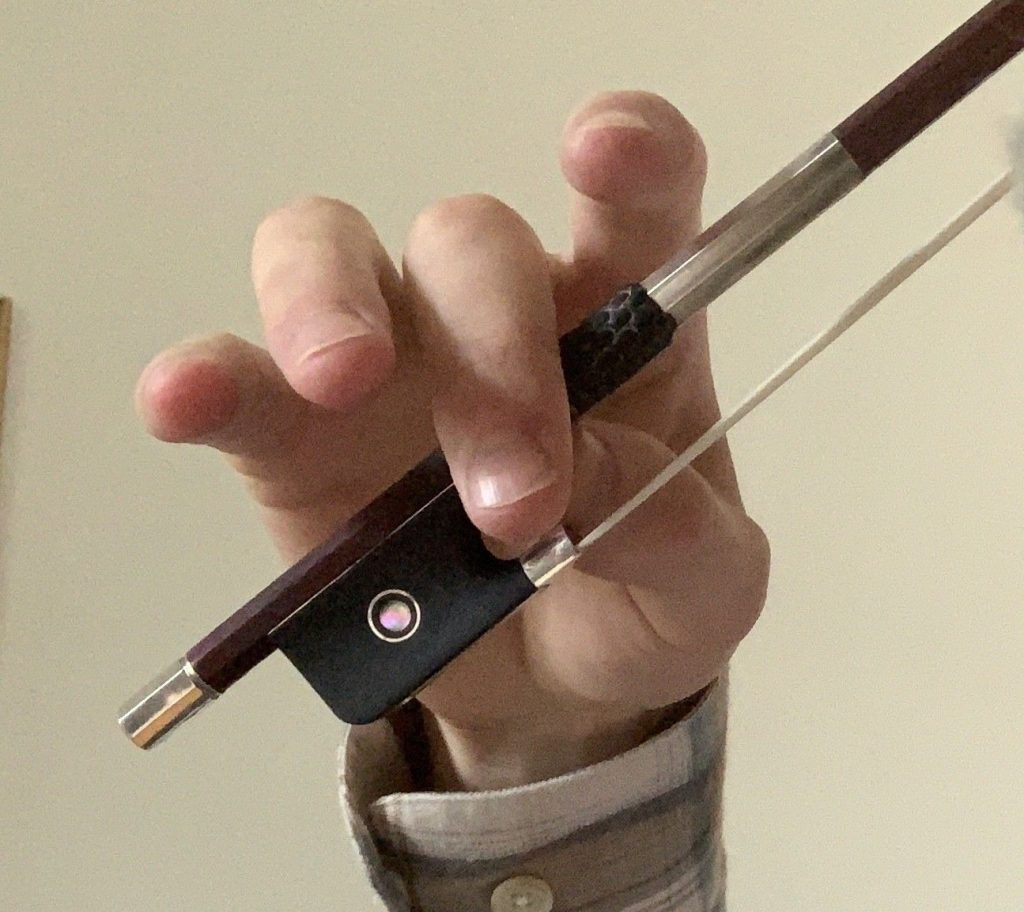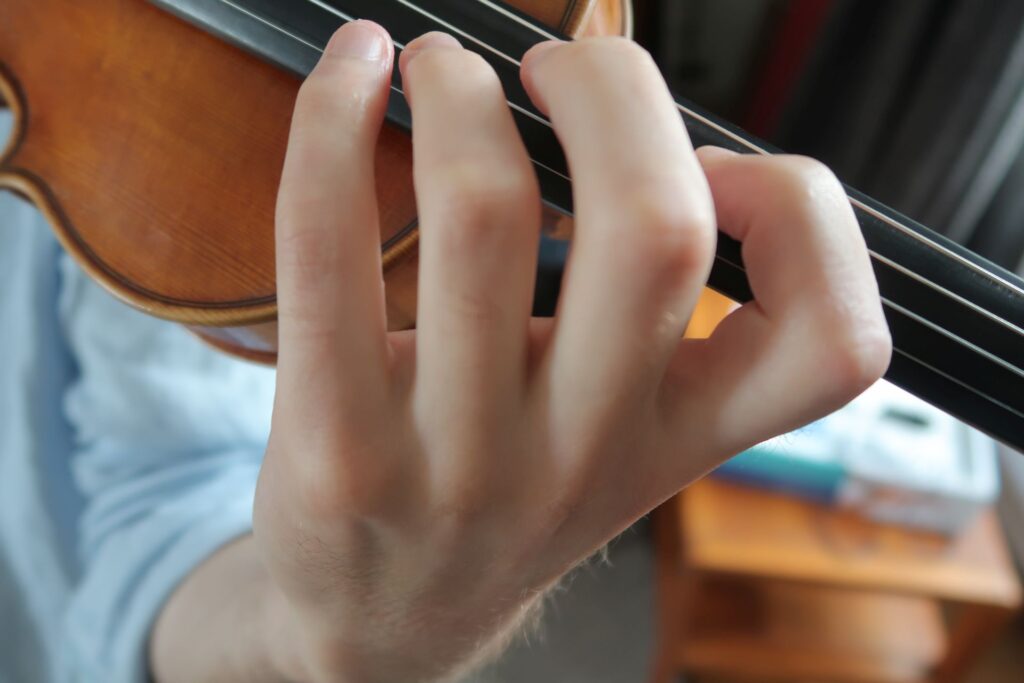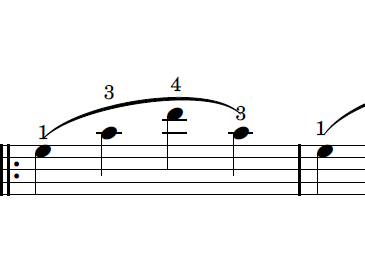Let’s get to know the violin bow a bit better. No doubt, we need to apply some force to the bow when playing the opening of Ravel’s Tzigane. And we definitely want to be able to play barely audible in some orchestral passages. But do you know exactly when to add force to the stick? And when to reduce the weight of the bow on the string?
Your ears will, of course, guide you. But by understanding the sound the bow produces using only its natural weight, you will develop more nuanced bow control. In this lesson, we will focus on learning what it sounds and feels like when you don’t add any extra force to the bow stick nor try to reduce the bow’s weight on the strings.
Exercise: Using the Weight of the Bow
To develop awareness of the bow’s natural weight, start by holding the bow loosely with just your thumb and middle finger. Follow these steps:
- Positioning the Bow: Begin about 10 cm below the middle of the bow and play a slow down bow (still only using your thumb and middle finger on the bow). Return to this point on the up bow.
- Maintaining Contact Point: Ensure that the contact point of the bow hair on the string remains unchanged. So, the bow doesn’t drift to the finger board or moves closer to the bridge during the bow stroke. Look at the contact point and check in a mirror to ensure the bow stays parallel to the bridge.
- Repeat on All Strings: Perform this exercise on all four strings.
Transitioning to a Normal Bow Hold
Once you’ve practiced with just the thumb and middle finger, transition to a normal bow hold. Try to maintain the same feeling of just the bow’s weight on the strings without adding any extra force. This practice helps you understand when it’s necessary to add more force to the stick and when to use less than the bow’s natural weight.
Be aware that the amount of weight applied to the string changes due to the difference in bow angle depending on which string you’re playing. When playing on the E-string, the bow is held much more vertically compared to when playing on the G-string. This naturally leads to less of the bow’s weight being applied to the E-string without any extra effort on your part. Conversely, on the G-string, where the bow is held more horizontally, more of the bow’s weight is applied. This works to our advantage because the E-string is much thinner and cannot handle as much weight as the G-string can.
Practical Application
For instance, on a long note with a diminuendo on a down bow, you might feel the need to lift weight out of the bow near the tip. However, often this isn’t necessary because the weight at the tip of the bow is already less by design. Unless a very soft dynamic is required, it is usually sufficient to rely on the natural weight of the bow.
Challenges Near the Frog
As discussed in another lesson (click here), playing near the frog presents extra challenges:
- Sound Quality: The sound can become scratchy and crushed due to the excess weight of the bow on the string here.
- Balance Point: Playing near the frog, well below the balance point causes the tip of the bow to drop, moving the bow towards the lower strings.
To address these issues, practice playing long bows as before, but this time use the whole bow. Start at the tip to play an up bow. Use only the thumb and middle finger. While challenging, playing surpassed to balance point of the bow on this up bow is achievable with:
- Increased Bow Speed: Increase the bow speed when approaching the balance point to maintain a clean sound.
- Proximity to the Bridge: Change the sounding point closer to the bridge when approaching the balance point. Move the bow even more to the bridge closer to the frog in order to counteract the excess weight on the string.
This exercise will enhance your awareness of the little finger’s role on the bow near the frog.
By understanding and practicing these techniques, you’ll gain better control over the bow and improve your overall sound quality. It will help you recognize when to adjust the force applied to the bow and when to trust its natural weight to produce the desired sound.


